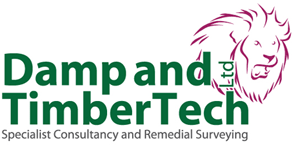Generally often the first awareness of a damp issue is either by deterioration of internal decorations, or timber decay, or often awareness of “damp musky odours”. You may have been advised in a Building Survey or Mortgage Building Survey to engage the services of specialist timber and damp surveyor before the exchange of contracts and this should be carried out by a PCA (Property Care Association) or BWPDA (British Wood Preserving and Damp Proofing Association) Contractor or Surveyor, Who is CSRT (Certificated Surveyor in Remedial Treatments) qualified.
Most people at this stage are confused, as to what degree of Survey they require, and also to how much of a damp problem they have, you may have little knowledge or understanding of this subject, and advice often found on the Internet is often vague, or somewhat confusing. You are faced with the dilemma of choosing a Surveyor or Contractor who is suitably qualified in this field. Ideally you want objective and independent advice, and an honest opinion from an experienced person who has no vested interest in their findings or recommendations, and who’s only interest is establishing the source of the problem and providing advice on curing the problem if one indeed exists.
Types & Scope of Survey
Different survey types demand different levels of inspection, the content of which will be agreed with the client at the outset. Each survey looks at the building defects and performance criteria of the structure, together with the remedial actions necessary to overcome any damp related faults.
You may not be buying or selling a property and therefore do not require a full mortgage specialist damp or timber survey and report. We can therefore still carry out a comprehensive inspection to give you peace of mind and help with alleviating any dampness, condensation, dry rot, timber decay or woodworm issues.
Specific isolated area of dampness or decay, or on site advice (Non Invasive): Level one
No report issued, this level of survey is not suitable for pre purchase
- Clients who have one small isolated area of dampness they are unsure about
- Just advice and peace of mind regarding small issues
- Initial investigation prior to commitment to a level 3 survey to be carried out at a later stage
Standard Damp & Timber Survey / Pre- Purchase Damp and Timber Inspection (Non Invasive): Level two
Following your Building Survey or Homebuyers Survey
- Clients who have had conflicting reports from different companies
- Pre purchase damp and timber report required for mortgage / re-mortgage purposes
- Clients who maybe think they are just being SOLD A PRODUCT which they do not need and not addressing the root cause of the problem
- For those clients who have had a problem “treated” two or three times only to find it has returned, as the problem was misdiagnosed in the first instance.
This level includes the following:
- A general surface inspection of those parts of the property that are reasonably accessible. In this context, reasonably accessible means visible and readily available for inspection from ground and first floor levels, without endangering the safety of the surveyor and without damaging the property
- Roof spaces (of houses) and flat roofs will be inspected, if safe and ready access is possible using a 3 meter surveyors’ ladder or they will be viewed from the ground
- Inspect the exterior of the building from ground level; both from within the boundaries of the property and from any immediately adjacent public areas, using binoculars and, where necessary, with the use of a 3 meter ladder
- The interior will be inspected where access permits, however walls behind Kitchen Units, dry lining, timber panelling or cavities cannot be examined or monitored. The condition of subfloor voids or areas beneath carpets, laminate or hardwood floors cannot be inspected
If, however, the surveyor identifies or suspects an obvious problem or defect, advice will be given as to what action should be taken.
Will not cover:
- Open up parts of the building that are covered, unexposed or inaccessible such as sub-floor voids and the surveyor will not remove or disturb insulating material within the roof void
- Raise fitted floor coverings
- Carry out excavations to expose foundations or open-up wall cavities and expose cavity wall ties
Defect Investigations and Exposure Surveying (Invasive): Level three
This is a more detailed investigation that uses ‘invasive’ techniques to establish the extent of dampness and decay. For example, we may have to lift carpets and floorboards, take off skirting boards and in some cases, form openings in parts of your property, to determine the extent of dampness or decay, and provide a more detailed examination. Although this is more expensive than a level one or two survey, and may disturb part of the dwelling, it will usually identify the precise cause of the defect so cost effective repair work can be organised.
If you’re in the process of purchasing a property and require an Invasive Inspection following an initial survey, you will need to obtain the written permission from the seller for us to cut A4 size holes into plasterwork/masonry to expose concealed timbers, cavities or areas covered by Dry lining, lift floor coverings, floorboards, etc. The purpose of this investigation is to expose and report on the extent of damage to the concealed areas. It must be understood that during such investigations it may not be possible to fully reinstate the disturbed areas, and that these exposed areas will require repair by tradesman following the investigation.
Case study 1: A Dry Rot outbreak beneath a timber suspended floor of a terraced house in Croydon

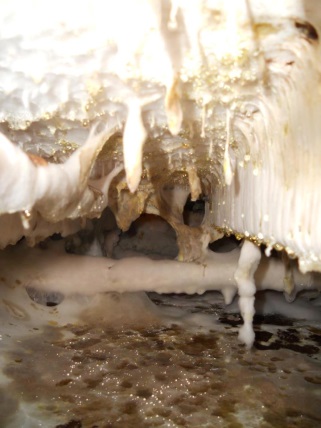
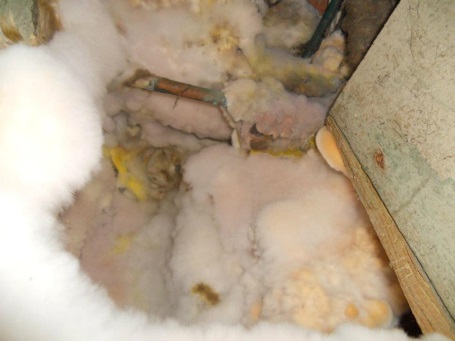
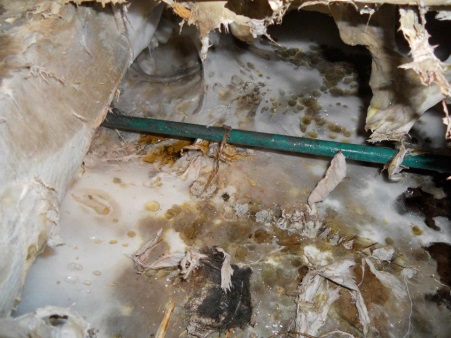
This Dry Rot outbreak was exposed during a Level 3 type survey. The cause of the outbreak was an unventilated sub floor void and condensing water pipe. The outbreak affected the party wall and the adjacent property.
Case study 2: Dry Rot outbreak beneath a staircase of a property in North London beneath a laminated floor.

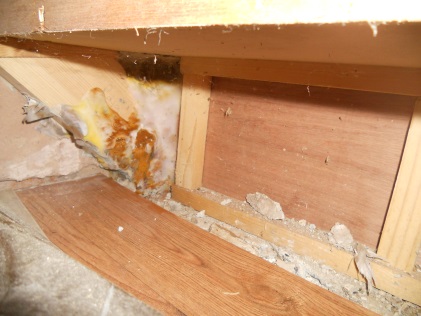
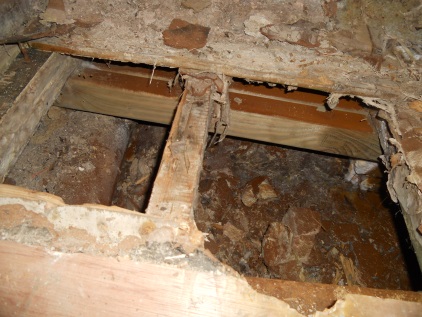


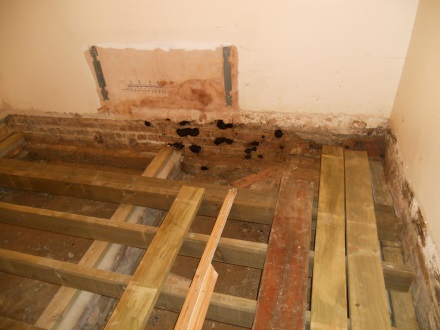
The above outbreak shows Dry Rot growing over pre-treated timbers again the sub floor ventilation was found to be inadequate the cause of the decay was leaking plumbing beneath a tiled bathroom floor.
The above case studies show the importance of correct exposure to establish the type, and extent of timber decay. Restrictions imposed during site visits not always possible to carry out this degree of destructive survey, especially during a pre purchase survey.
Case Study 3
Large refurbishment of a former hospital into multiple dwellings
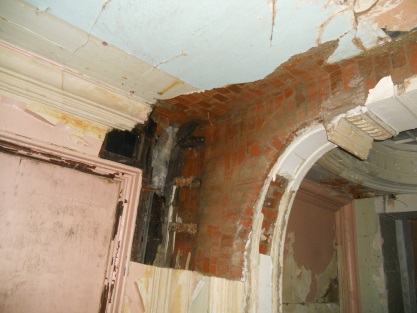
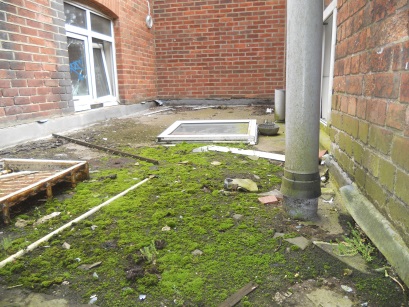
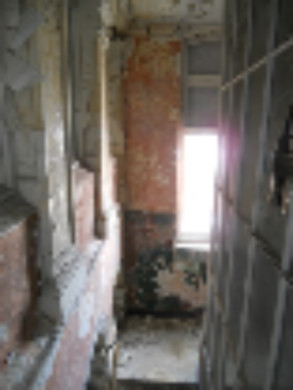

This survey took place over two days with myself and an assistant, we surveyed the entire building and produced a comprehensive independent report for the construction company. This building is now refurbished and occupied.
Case Study 4
We were instructed to carry out a general damp survey on this property which has experienced various damp issues.

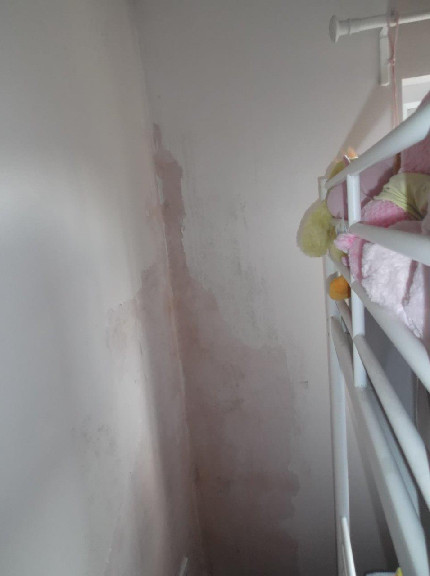
The result of this survey revealed that a leaking gutter was producing a thermally inefficient surface and that internal environmental measures were necessary to reduce the risk of condensation.
